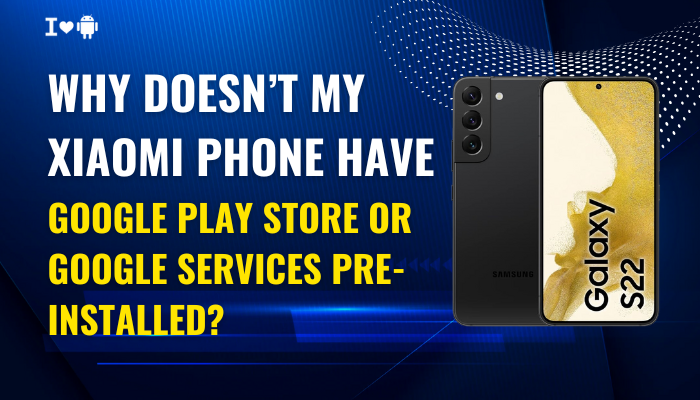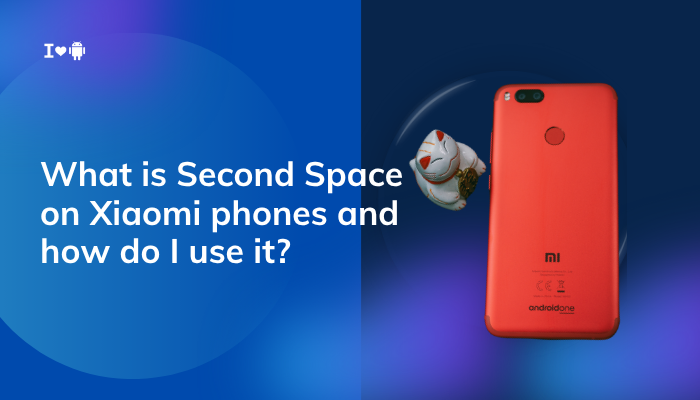Introduction
If you’ve just unboxed a new Xiaomi or Redmi phone and noticed there’s no Google Play Store, Gmail, or other Google services, you aren’t alone. Xiaomi sells two main software versions globally: the China ROM, which omits Google Mobile Services (GMS), and the Global ROM, which includes them.
Understanding why Google apps are missing involves Xiaomi’s regional strategies, licensing costs, and local regulations.

- The difference between MIUI China ROM and MIUI Global ROM
- Licensing and certification requirements for Google Mobile Services
- Regional regulations and market strategies
- Xiaomi’s partnership and revenue model with Google
- How Xiaomi customizes MIUI for China versus the rest of the world
- The risks and limitations of China-market devices
- Safe methods to install Google services on a China ROM
- Flashing an official Global ROM
- Using third-party GApps installers and microG
- Best practices and final recommendations
MIUI China ROM vs. MIUI Global ROM
What’s Included in Each
- MIUI China ROM: Designed for the Chinese market. Includes Xiaomi’s native apps (Mi App Store, Mi Browser, Mi Video) and region-specific services (Mi Pay China, WeChat integration). No Google Play Store, Gmail, Maps, or Google Play Services.
- MIUI Global ROM: Tailored for international markets. Ships pre-loaded with Google Mobile Services (GMS)—Play Store, Google Play Services, Gmail, YouTube, Maps, and Google Assistant—alongside Xiaomi’s global apps.
How to Identify Your ROM
- Settings → About phone → MIUI version:
- If it mentions “MIUI Global” or “MIUI EU,” it’s the Global ROM.
- If it says “MIUI” without “Global” or has Chinese text in the apps menu, it’s likely China ROM.
Licensing and Certification for Google Mobile Services
Google’s Strict Requirements
Google authorizes GMS only on devices that pass its Compatibility Test Suite (CTS) and enter a formal licensing agreement. This process ensures Android compatibility and security compliance.
- Certification Costs: Manufacturers pay licensing fees and commit to including Google’s proprietary services and trademark compliance.
- Ongoing Audits: Devices must remain up-to-date with security patches and pass regular Google audits.
Xiaomi’s Cost-Benefit Calculation
- For devices sold in China, where Google services are blocked domestically, Xiaomi saves on licensing fees by excluding GMS and substituting its own ecosystem.
- For global markets, Xiaomi budgets for licensing to remain competitive by offering Play Store and Google apps out of the box.
Regional Regulations and Market Strategies
China’s Internet Ecosystem
- The Great Firewall effectively bans Google services in mainland China. Local alternatives (Baidu, Tencent, Alibaba) dominate search, maps, and messaging.
- Xiaomi aligns with government policies by removing GMS entirely from China-market devices, avoiding firewall conflicts and legal ambiguity.
International Market Expectations
- In Europe, the Americas, South Asia, and other regions, consumers expect Google services. Xiaomi therefore releases Global ROMs pre-integrated with GMS to meet these expectations.
Xiaomi’s Partnership and Revenue Model
Monetizing Through Software
While Xiaomi’s hardware margins are slim, it earns revenue via software:
- In-App Advertising: Mi Browser, Mi Video, and Mi Music display ads.
- App Store Sales & Partnerships: Promoted content in Mi App Store.
- Value-Added Services: Cloud storage, themes, and gaming services.
Including Google services on Global ROMs doesn’t conflict with this model; Google pays Xiaomi a share for Play Store usage, and Xiaomi continues its own ad-supported ecosystem in parallel.
How MIUI Differs in China vs. Global
| Feature | MIUI China ROM | MIUI Global ROM |
| App Store | Mi App Store (no Play Store) | Google Play Store + Mi App Store option |
| Cloud Services | Mi Cloud (China-only policies) | Mi Cloud global with Google backup |
| Default Browser | Mi Browser with Chinese search engines | Mi Browser + Google Chrome option |
| Payment Services | Mi Pay China, WeChat Pay | Google Pay + Mi Pay (varies by region) |
| Pre-installed Google Apps | None | Gmail, Maps, YouTube, Drive, etc. |
MIUI China ROM often updates faster with China-specific features but lacks international localization and GMS support.
Risks and Limitations of China-Market Devices
Language and Regional Bugs
- Some menus and apps may default to Chinese, with incomplete translations.
- OTA updates may be region-specific and include China market features only.
App Compatibility
- Some Western apps assume Google Play Services for authentication (e.g., Uber, banking apps) and may fail or lack push notifications on China ROMs without GMS.
Installing Google Mobile Services on China ROM
If you have a China ROM device but need GMS, follow these safe steps:
Use the Official “Google Installer” App
- Download the “Google Installer” APK from a trusted source (e.g., APKMirror).
- Enable Unknown Sources: Settings → Additional settings → Privacy → Install unknown apps → allow your file manager.
- Install Google Installer and follow on-screen prompts to sequentially install:
- Google Services Framework
- Google Play Services
- Google Play Store
- Google account manager, Play Protect
- Reboot and log in to your Google account.
Note: Performance and stability vary. Some system-level features (SafetyNet) may not pass integrity checks.
Flashing an Official Global ROM
For the most stable GMS experience, install Xiaomi’s Global ROM:
Preparations
- Backup Data: Use Mi Cloud or Google backup.
- Ensure Battery >50%.
- Download the Correct Global ROM: From Xiaomi’s official site for your exact model.
Flashing Steps
- Settings → About phone → MIUI version → Tap “…” → Choose Update package.
- Select the downloaded Global ROM ZIP.
- Let the phone reboot and automatically install.
- Factory reset after flashing for clean operation: Settings → About phone → Backup & reset → Erase all data.
- Re-import your data and enjoy built-in Google services.
Warning: Flashing carries risk. Follow Xiaomi’s official instructions and ensure the ROM matches your model to avoid bricking.
Using microG as an Alternative
For those who prefer open-source:
What Is microG?
microG is a free implementation of Google’s proprietary GMS libraries, enabling apps to use location and push services without official Play Services.
Installation Overview
- Unlock bootloader and install a custom recovery (TWRP).
- Flash a microG-ready ROM or patch your existing ROM with the microG installer zip.
- Configure microG settings: Grant signature spoofing, device registration, and unified NLP.
- Install FDroid and use open-source apps when possible.
Note: microG requires technical expertise and may break OTA updates.
Best Practices and Final Recommendations
- Buy the Right Model: Purchase from official Xiaomi channels to ensure you get a Global-market device with GMS pre-installed.
- Check ROM Before Buying: On e-commerce sites, verify “Global Version” in specs.
- Use Official Tools: Prefer Xiaomi’s global flashing tools and packages over third-party sources.
- Maintain Updates: Keep your Global ROM and Google apps updated via Settings → System update and Play Store → My apps & games.
- Backup Regularly: Cloud backups protect your data whether you switch ROMs or install GMS manually.
Conclusion
Xiaomi omits Google Play Store and Google Mobile Services on China-market MIUI to comply with regional regulations, avoid licensing costs, and promote its own ecosystem.
For users in global markets, the Global ROM provides full GMS integration out of the box. If you’ve bought a China ROM device, you can install Google services manually via Google Installer, flash the official Global ROM, or experiment with microG.
Always back up your data, verify sources, and follow official instructions to ensure a smooth, stable experience with Google apps on your Xiaomi or Redmi smartphone.



